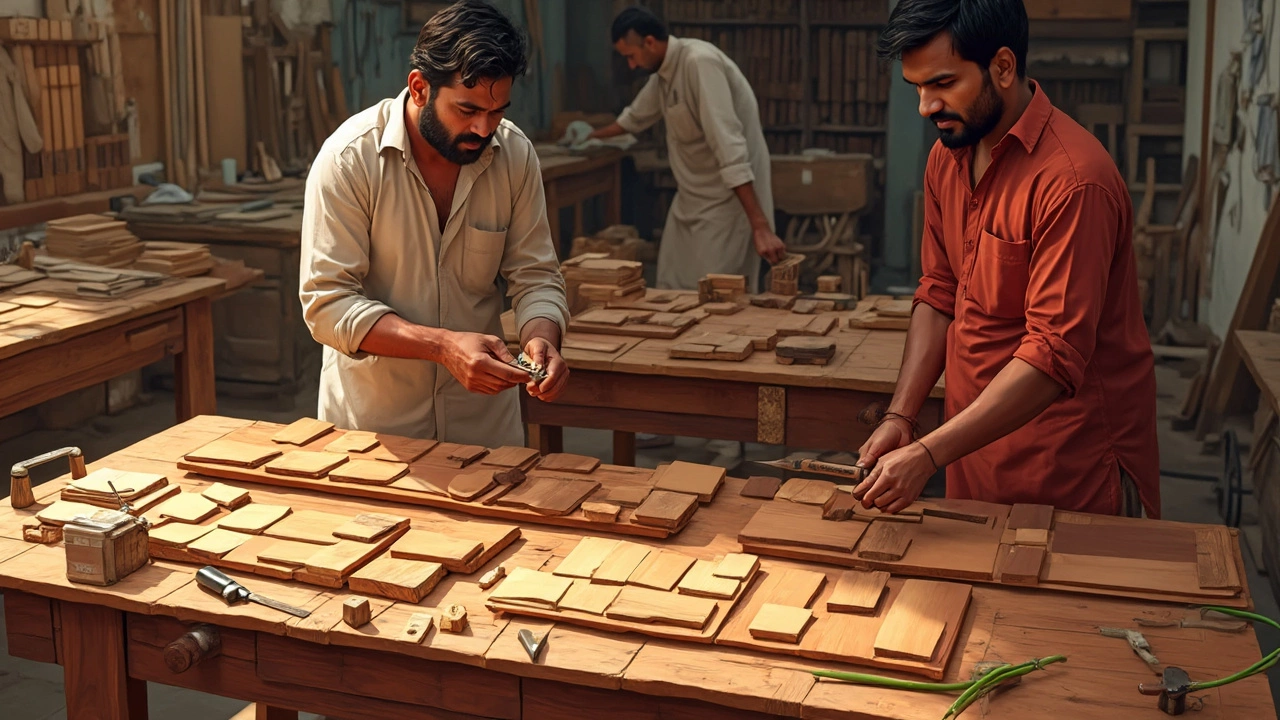Wood Selection Tips: Your Quick Guide to Picking the Perfect Timber
Looking for the right wood can feel like a maze, but it doesn’t have to be. Whether you’re building a dining table, a bookshelf, or a simple DIY shelf, the right timber makes the difference between a piece that lasts and one that flops. Below are the basics you need to know before you head to the lumberyard.
Know the End Use and Environment
First, ask yourself where the piece will live. Indoor furniture that stays dry can handle softer woods like pine or poplar. Outdoor projects, on the other hand, need wood that can stand up to moisture, insects, and sunlight. Cedar, teak, and ipe are popular outdoor choices because they resist rot and warping. If you’re making something that will see heavy use—like a workbench—you’ll want a hard, dense wood such as oak or maple that can hold up to stress.
Check Grain, Color, and Stability
Grain tells you a lot about how the wood will behave. Straight grain runs parallel to the length of the board and usually offers good strength. Irregular grain can look interesting but may split more easily. Color is another cue; lighter woods like ash or birch are great for a bright, modern look, while darker walnut or mahogany give a richer feel. Stability is key: wood that moves a lot with humidity changes can crack or warp. Look for quartersawn or rift‑sawn boards—these cuts reduce movement compared to plain‑sawn pieces.
Don’t forget to tap the wood. A clear, resonant sound often means the timber is solid, not hollow or filled with knots that could weaken it later. You can also feel the density; denser woods feel heavier in your hand.
Consider Cost and Sustainability
Budget matters. Pine and fir are affordable and easy to work with, making them ideal for beginners. Exotic woods like rosewood or ebony look stunning but come with a high price tag and may raise sustainability concerns. Check for certifications like FSC or PEFC to ensure the wood comes from responsibly managed forests. In many cases, you can get a similar look by using a locally sourced species that’s cheaper and greener.
Finish and Maintenance
The finish you plan to apply will affect your wood choice. If you love a matte, natural look, go for woods that hold oil well, such as teak or cherry. For high‑gloss finishes, maple and birch take polish beautifully. Remember that finishing also protects the wood, so a piece that might otherwise rot outdoors can survive longer with proper sealing.
Maintenance is simple when you pick the right wood from the start. Regular dusting, occasional oiling, and keeping the piece away from direct water will extend its life. For outdoor items, a yearly coat of marine varnish keeps the wood looking fresh.
Final Quick Checklist
- Identify where the piece will be used – indoor, outdoor, heavy‑load?
- Choose a wood with suitable grain and stability for that setting.
- Match color and texture to your design style.
- Balance cost with sustainability – look for certified sources.
- Plan the finish and maintenance routine early.
With these wood selection tips in mind, you’ll walk into any lumberyard confident and ready to pick the best timber for your project. Happy building!

Best Tree for Furniture in India: A Practical Guide
Trying to figure out which tree makes the best furniture in India can get confusing with so many choices on the market. This guide breaks down the most popular types of wood used by Indian furniture makers, giving you practical info on their strengths, looks, and pricing. You'll learn what really matters when picking wood, plus pro tips to get sturdy, lasting pieces. If you want quality furniture or just want your next table to last more than a few years, this article gets you sorted. No confusing jargon—just facts, tips, and straight talk.
Read More